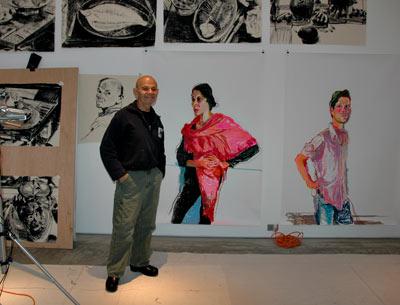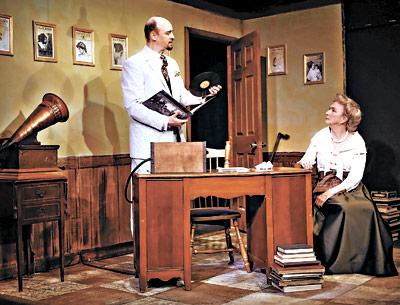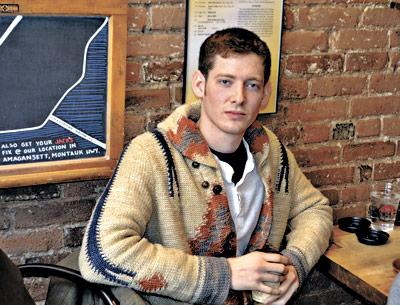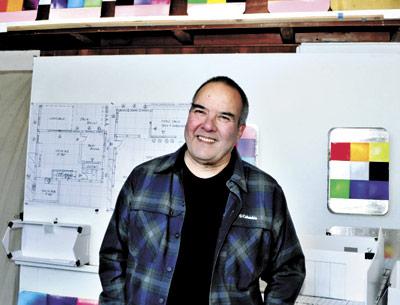It Was 50 Years Ago Today
It Was 50 Years Ago Today

Paul McCartney and Ringo Starr, age-defying former Beatles, performed together at the Grammy Awards in Los Angeles on Jan. 26. Mr. McCartney picked up five Grammys, and Mr. Starr accepted the Recording Academy’s Lifetime Achievement Award on behalf of his former band mates. He and Mr. McCartney, the latter a familiar face to many in Amagansett and surrounding hamlets, have maintained active touring and recording schedules into their 70s.
Along with Yoko Ono and Olivia Harrison, the widows of John Lennon and George Harrison, the two living Beatles continue, through their words and deeds, to promote the utopian ideals that flourished with their former band’s stratospheric artistic and commercial success — peace and universal love — and disciplines, like meditation and vegetarianism, that engender that dream.
With the kind of vitality these septuagenarian hippies possess, it may be difficult to believe that a half century stands between tomorrow and Feb. 7, 1964, when a British pop quartet landed on American shores to change everything forever.
But it really was 50 years ago today — or it soon will be — and humanity, the fortunate recipient of the Beatles’ unparalleled body of work, will mark the anniversary in ways befitting royalty, if not deities.
On the South Fork, the Beatles’ historic first visit to America will be celebrated with three nights of music and film at the Bay Street Theatre in Sag Harbor. Corresponding with HarborFrost, Sag Harbor’s fourth annual winter celebration, “It Was 50 Years Ago Today . . .” starts tomorrow at 8 p.m. with “Legends: The Beatles,” a film compilation by Joe Lauro. Mr. Lauro is the president of Historic Films Archive, a Greenport library of musical performance and other entertainment footage spanning a century.
“Legends” includes the first known film of the Beatles, in a 1962 performance at the Cavern Club in the Beatles’ hometown of Liverpool, England, as well as their final public performance, an unannounced January 1969 lunchtime gig on the roof of their offices in London. The film also features some of the oddball “cover” recordings inspired by — and to cash in on — the Beatles’ explosive success in America and around the world, including performances by Frank Sinatra and Eartha Kitt.
Mr. Lauro called the presentation “part theatrical, mainly film.” The film, he said, will include “other people from the period covering their tunes, as well as some footage I like to think people haven’t seen, from press conferences, fans, and promos that never got re-released to barbers wanting to get them in the chair to cut their hair off!”
On Saturday at 8 p.m., local artists will pay tribute to the Fab Four in “Celebrating the Beatles.” Corky Laing, a Greenport resident who was the drummer of the band Mountain, is on the bill, along with Nancy Atlas, Gene Casey, MamaLee Rose and Friends, Caroline Doctorow, Jim Turner, Inda Eaton, Joe Delia, Dawnette Darden, and Mr. Lauro. Ms. Darden and Mr. Lauro are in the band the HooDoo Loungers.
A house band will perform between acts that, Mr. Lauro said, will include performances as diverse as a choir performing a capella to a solo piano medley. “The house band is going to keep it real pure,” he said. “We’re trying to do the stuff as close as guys in our middle age trying to imitate people in their early 20s can.”
On Sunday at 7 p.m., the entire Feb. 9, 1964, broadcast of “The Ed Sullivan Show” will be shown following a screening of rare film of the Beatles’ first visit to New York City. The “Ed Sullivan” broadcast started at 8 p.m., and this anniversary showing will coincide with that storied broadcast, 50 years to the minute later.
“I’ll never forget it,” Mr. Lauro said of the original broadcast. “My sister and her friend Mary were out of their minds. They were about 12; I was 6 or 7. I was caught up in the whole thing.”
To make the weekend even more fab, a variety of Beatles memorabilia will be on view throughout the theater, Mr. Lauro said.
Tickets for “Legends: The Beatles” are $15. For Saturday night’s concert, tickets are $25 in advance and $35 on the day of the show and include a glass of house wine for adults. Admission for “The Beatles on Ed Sullivan” is $5. The theater is also offering a Fab 4 Fan pass for $40, granting admission to all three nights.
Fifty years on, people around the world continue to feel the Beatles’ influence — music, film, visual art, poetry, fashion, and attitudes were profoundly shaped by the 1960s, with the Beatles always at the forefront. Innumerable teen idols and “next big things” have come and, thankfully, gone since that long-ago Sunday evening broadcast. But while the music industry and the spectacle of celebrity have grown by orders of magnitude since, and largely because of, the Beatles, no artist has generated the same degree of mania, inspiration, adulation, or flat-out joy.
Like Shakespeare before them, a phenomenon such as the Beatles surely cannot arise more than once in a millennium. Or can it? “Tomorrow never knows,” as Mr. Starr once said, but it doesn’t matter anyway. The Beatles’ mind-bendingly brilliant artistic achievements are ageless and timeless. Fifty years on, the world remains riveted, enchanted, and grateful.





